The Moza CRP Pedals in a nutshell
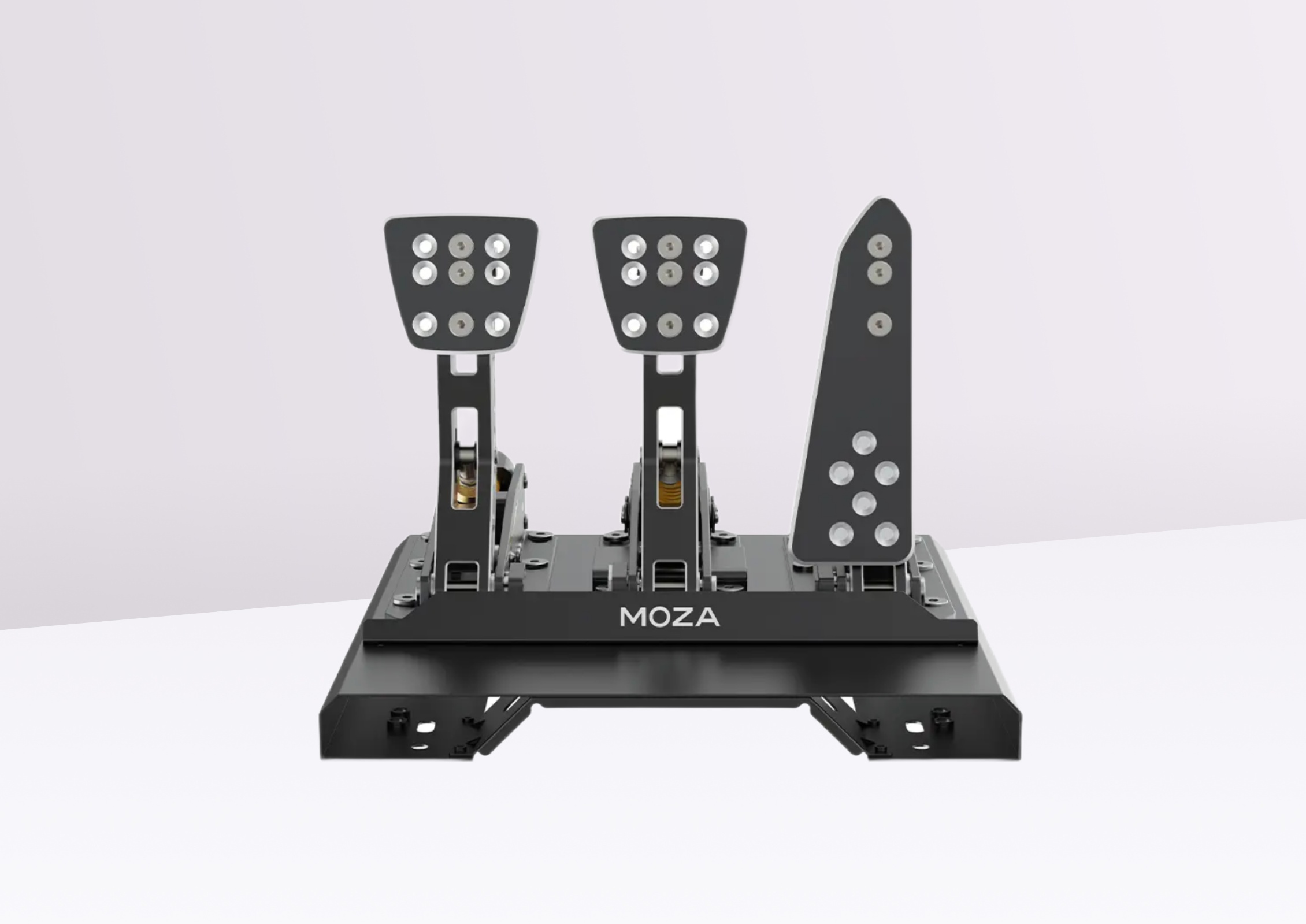
Advantages & Disadvantages
✅ Aluminum-alloy structure
✅ Load Cell withstands 200 kg of pressure
✅ Compatible with Moza ecosystem and those of other brands
❌ The area between the spring and the Load Cell is a little vague
ㅤ
Today, almost all manufacturers of premium sim-racing peripherals offer a full range of products to satisfy the needs of all virtual pilots. These typically include Direct Drive bases, steering wheels, Load Cell pedals, shifters, handbrakes, dashboards and other sim-racing accessories. All brands offer more or less of this in their catalogs, and are somewhat obliged to do so in order to be competitive.
Industry leaders include brands such as SimagicSimucube and, of course Fanatecat least when it comes to high-end products. Of course, there are other players such as Logitech and Thrustmasterbut these brands are much more generalist, and this is reflected in their product ranges. The most concrete example of this is that Logitech and Thrustmaster have taken a long time to develop and market Direct Drive bases, even though they’ve been in the industry for over 20 years.
And at exactly the opposite end of the spectrum, we have Moza Racing, a player who has only just entered the sim-racing market and has quickly become competitive. In the space of 3 years (give or take a few), Moza has brought out a rather complete range of sim-racing peripherals, including DD bases such as the Moza R9, several steering wheels, 2 cranksets including a Load Cell, a shifter, a handbrake and other racing accessories. Let’s take a look at Moza’s Load Cell crankset: the CRP. I’ll tell you about its features, strengths and weaknesses, and give you my opinion.
Main features and technical specifications of the crankset
- Complete aluminum alloy structure
- Load Cell on all pedals, with the brake pedal absorbing 200 kg of pressure
- Hall sensors on all 3 pedals
- Fully adjustable pedals
- Weight 7.5 kg
- Compatible with other ecosystems via USB/RJ12 interface
- PC-compatible only
Moza CRP design
After seeing Moza Racing’s products, I’d say the company hires superb designers. Frankly, the CRP is just a magnificent sim-racing product, virtually taken from top-level motor racing.
The peripheral is almost a piece of jewelry, so beautiful is its angled design. It’s edgy, as on the R16 and R21, and is the pedalboard of choice for both bases.
The matte black finish is magnificent, with some light bronze accents. The brake and clutch pedals are identical in design, and just as sublime. As for the accelerator pedal, it’s a calf, but a very nice one, I must say. The only slight drawback I can find in the CRP’s design is its rear end. The light bronze looks pretty good, but the yellow of the springs isn’t really to my taste…
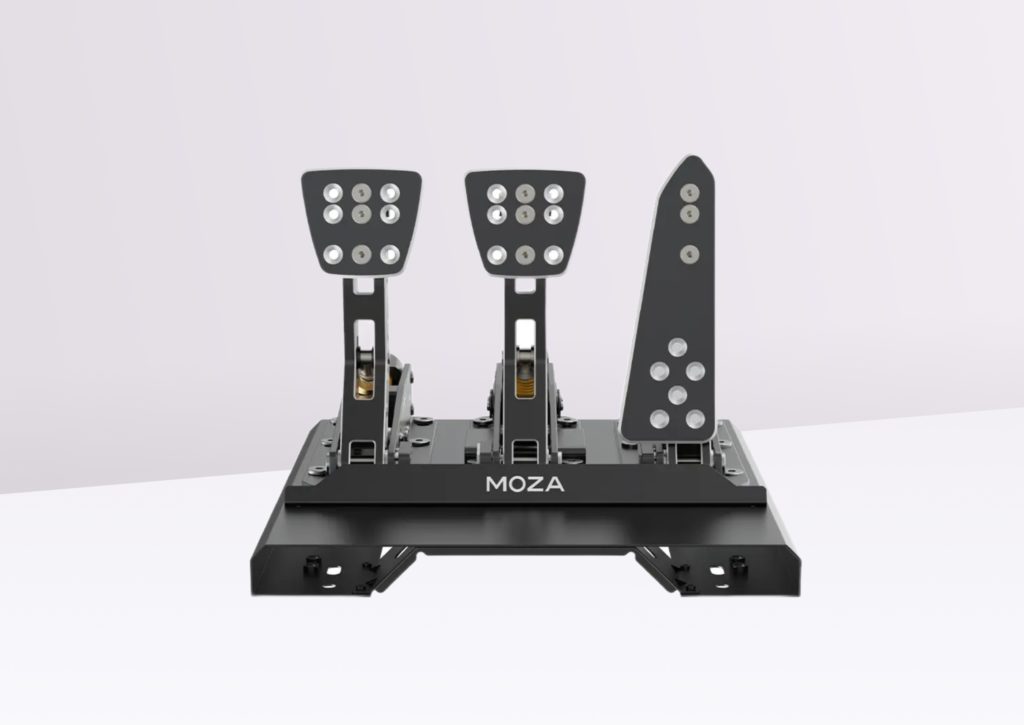
Customized assembly
For those looking to use this crankset on the ground, I’m telling you right now: move on to the SRP or SRP-Lite. The CRP is a crankset that should only be used with a cockpit, and a good quality one at that.
For mounting, we have several holes underneath that will accommodate most chassis available on the market. The operation is fairly straightforward to carry out, and the mounting possibilities are numerous. You have a plate on which the 3 pedals are mounted. In the worst case, you can dismantle the pedals to attach the plate more easily to the chassis. Personally, I haven’t done this, but it’s an option.
Manufacturing and finishing
For manufacturing, we use aluminum alloy on all parts of this crankset, from the plate on which the pedals are mounted, to the pedals themselves. What’s more, it’s CNC-machined aluminum, and that says a lot about the finish and build quality.
After inspection under the microscope, I didn’t notice any defects or badly machined parts in the catalog. It’s just perfect, and it has to be, because the CRP isn’t cheap (we’ll see the price below). The paintwork is perfect, as is the finish on virtually all CRP parts.
Everything fits together perfectly, with no gaps, voids or other gaps. This is a premium peripheral, which goes hand in hand with its price and the audience it seeks to appeal to.
Getting to know the pedals
When it comes to adjustability, we’ve got you covered. The pedals are adjustable in every respect, from the spacing between them, to their inclination, to their plate. It’s a real pleasure to have a crankset that offers a high level of adjustability, but that’s also what you’d expect from a premium product.
The Load Cell of the brake and other pedals can also be adjusted by swapping springs and elastomers. For the springs, the operation is fairly easy if you’re handy. For the elastomer, it’s much more complicated. I won’t go into the details of this operation as it’s long to explain, but expect to hate Moza a little. It’s doable, but a little complicated for my taste, especially compared to the competition.
Sensations during play
Let’s move on to the feel of this Moza Racing crankset. To put it in context, the CRP is a Load Cell crankset with 2 brake stages, a 3-stage clutch with a flat mechanism and a 2-stage gas pedal.
As for the throttle, the feel is rather linear, as the mechanism is very light in my opinion. I find it excellent under the pedal, and you won’t be surprised when using it for sim-racing. As for dead zones, there are hardly any, or at least I didn’t notice any during my runs.
Concerning the clutch, the pedal is light at the beginning, harder in the middle (stage 2) and ultra-light at the end of the stroke. If you use it normally, it’s pure bliss and almost as smooth as some cars. But if you go all heel-and-toe on it, you won’t feel much, as your foot is going to massacre the clutch pedal. Nonetheless, it holds up without a hitch.
Finally, the brake pedal. What more can I say than that it’s practically a killer to use in sim-racing, once you’ve found the right pressure settings. The feeling is linear at first, just long enough to get past the1st stage of the spring, and the sensation is immediately hardened as the elastomer kicks in without warning. As a result, you end up with a brake pedal that gives no feedback during the transition between its 2 stages: it’s a tad light, and then it’s ultra-hard. Some people like it, I’m one of them, and I’m sure others will find it confusing at first. If you go into it on the fly, you won’t feel the lack of transition.
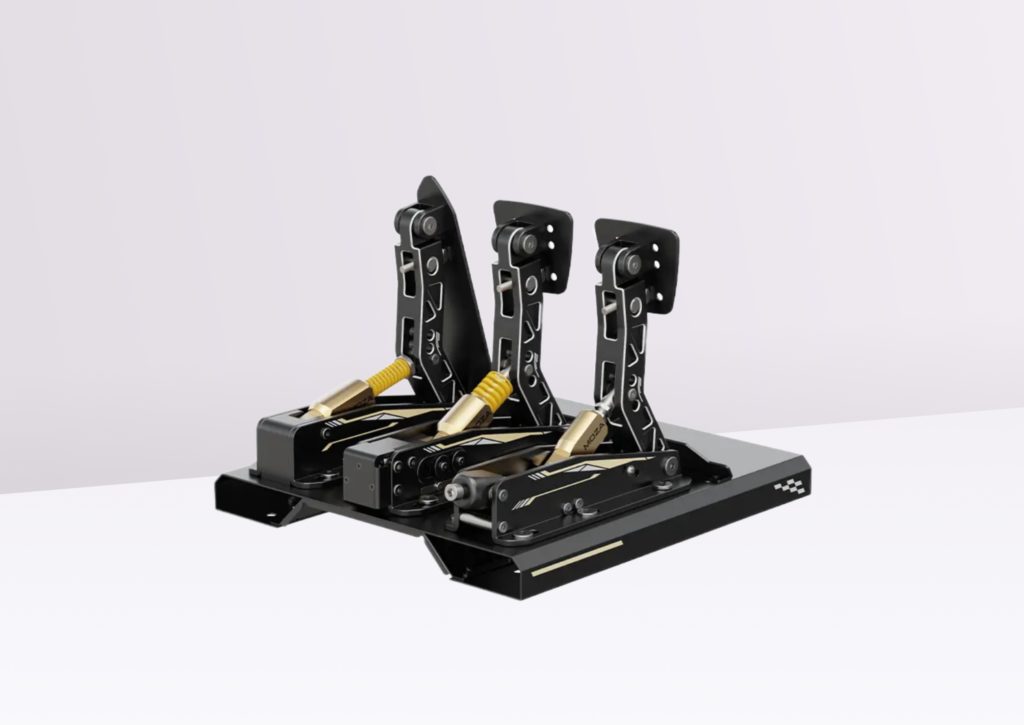
Moza CRP compatibility
The CRP is compatible with Moza Racing bases via RJ12, or any other ecosystem thanks to its USB plug, which connects only to PCs.
As far as sim-racing titles are concerned, I’ve tried it on AC, ACC, iRacing, Forza, rFactor and Dirt, and had no problems at all with it, which implies that this pedalboard is compatible with practically everything on the racing game market.
Value for money
The CRP is priced at €499 at the moment, and I think it’s pretty competitively priced, with good value for money. The manufacturing is very good, the CRP is a really solid device, designed to take the abuse of your feet, and its price is contained, especially considering that it’s a little technological gem.
My verdict on Moza Racing’s CRP crankset
I really enjoyed my sessions with this crankset, and I don’t think you’ll find anything better for €500. The brake’s Load Cell is a bit weird, since it omits the transition zone with the elastomer, but you quickly get used to it in sim-racing. The throttle is very good, and the clutch is excellent for everything except heel-toeing, where the sensations will be put to one side, rendering the 3-stage system practically useless.
Would I recommend this pedalboard? Well, yes. It’s beautiful, it works very well and it’s competitively priced. Is it perfect? Of course it doesn’t. But the CRP ticks virtually all the boxes for being a good pedalboard, and it does the job properly.

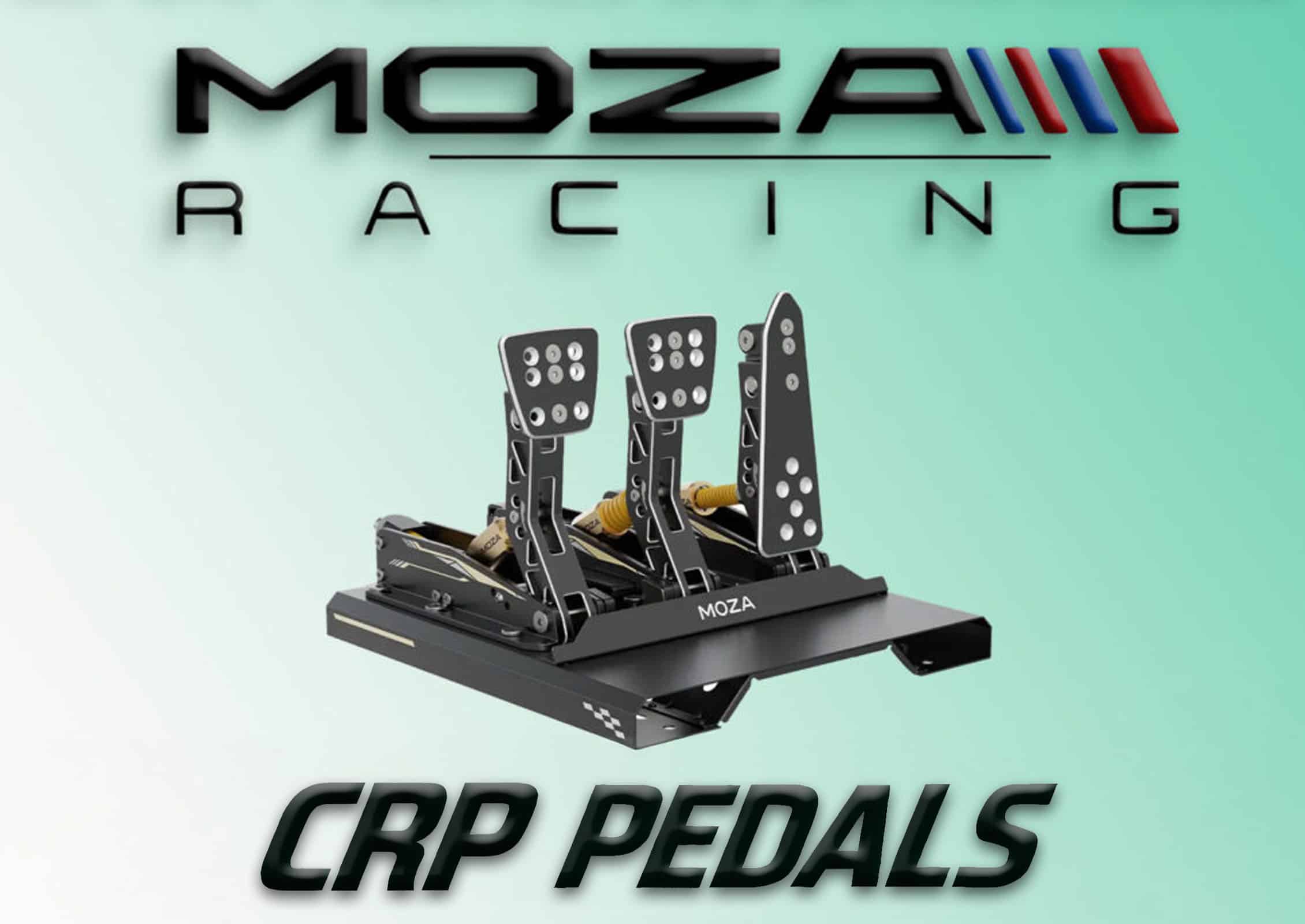
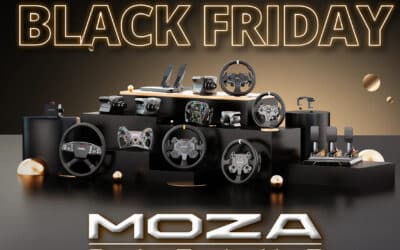


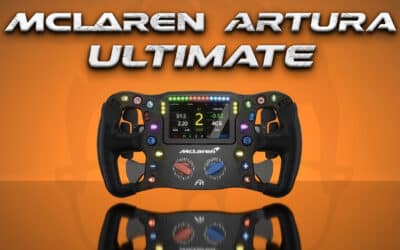
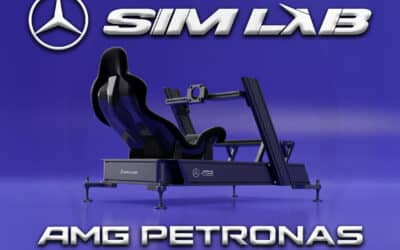
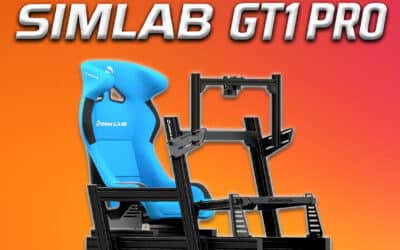
0 Comments